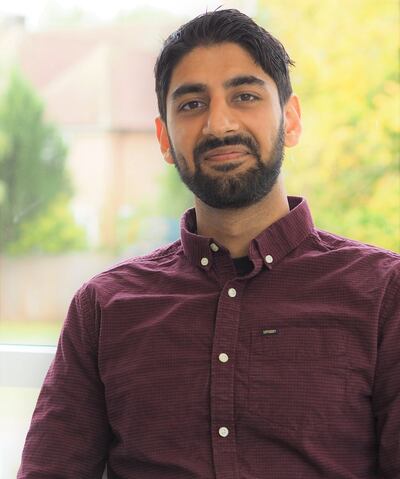As the new year begins, it coincides with the beginning of the rollout of Ireland’s Covid-19 vaccination programme.
But what exactly is a working day like for those involved in the development of these vaccines? An incredibly important field regardless, few could have foreseen the weight of the expectations placed on those working in the area at the beginning of 2020.
Sarah Mirza and Dhawal Chelani are both clinical research scientists at Pfizer working in vaccine development. Each is cognisant of the significance of the work the team in Pfizer have been doing at the “coalface” of the fight against the pandemic in helping to devise and run the clinical trials for the Pfizer/BioNTech Covid-19 vaccine, which received conditional marketing authorization by the EMA in December and is now being rolled out nationwide.
Both are science graduates. Mirza has worked in clinical research for over two decades, the latter half of which has been spent in vaccine development, while Chelani has a similar background, having worked across a variety of therapeutic areas in different companies.
Their current role includes developing protocols for research studies, writing the documents pertaining to informed consent, and reviewing the data that begins to trickle in. They oversee the trial’s progress, working with medics to ensure ongoing safety monitoring, and even liaising with the regulatory authorities once the vaccine is on the market.

Chelani explains why the development of a new drug or vaccine typically takes several years. “The four phases of clinical trials, as well as the pre-clinical work, involves a lot of resources. The whole medicine development process takes a huge amount of time. It’s usually around 12 years to go from a molecule to actually get it approved to be used as a medicine in the market,” he says.
The vast array of different disciplines involved in the development of ground-breaking therapeutics or prophylactics is staggering. As well as working with different teams within their own pharmaceutical company, including manufacturing, medical, and regulatory affairs, clinical research scientists must also engage with the principal investigators at each study site. The input from the various functional teams is key to ensuring the successful development of a therapy or vaccine, says Chelani.
“In addition to the investigators at the sites involved in our clinical studies, we liaise with the ethics committees who undertake a wide variety of tasks including reviewing the protocol to ensure the study procedures and conduct with reference to participant safety.
Even though we are moving with extraordinary speed, preservation of high quality and safety standards is critically important throughout development
“The committees are separate to the regulators and are more involved in the participants' safety side of things. Many clinical studies are also overseen by independent, external data monitoring committees, which are a set of medical and non-medical experts in their field who closely monitor the study and provide recommendations based on the data.”

Vaccine science has evolved dramatically since Edward Jenner first demonstrated that an injection of the mild cowpox virus could protect against smallpox over 220 years ago.
The Pfizer/BioNTech mRNA vaccine is a new approach to vaccination. Rather than having the viral protein or inactivated virus injected, a person receives the genetic material – messenger RNA or mRNA – for a small part of the virus encoding a viral protein, essentially delivering the genetic instructions to, in part, mimic what the virus does in nature.
MRNA vaccines are different because they contain information about the infectious agent to give a body's cells instructions to make a viral protein that can be recognised by the immune system. The mRNA is translated into protein, which invoke the immune response and results in the production of antibodies against the protein.
Chelani says that innovative techniques and advances in technology have helped to transform the process of vaccine development, making it more efficient. This helps explain why the development of a vaccine against Sars-CoV-2 has happened in record time.
Chelaini says, “even though we are moving with extraordinary speed, preservation of high quality and safety standards is critically important throughout development. We are taking all of the regulatory and operational steps that we would normally take for all of our vaccine trials, maintaining the highest standards in our development process.
It has helped bring hope to people right across the world
“We're really lucky to live in an age of bioinformatics technology. We can use computer modelling to help us predict whether something will be a good candidate for clinical trials, and this is really key because it saves us time, meaning we don’t spend resources on candidates that are less likely to be successful in preclinical and clinical studies,” he explains.
Mirza echoes this, saying scientists can now use artificial intelligence to model disease patterns, also helping to be more efficient and getting vaccines and medicines to patients in a quicker timeframe. “It’s really fascinating how things have developed, even in the last two-to-three years, that’s why we can move quickly and be as agile as we have been,” she says.
Indeed, both say they feel “honoured and proud” to work with Pfizer and to also see the impact that vaccination may have across the globe.
“A lot of time I would tell people what I do, and their eyes just glaze over as they have no idea what vaccine research or clinical research is,” admits Mirza. “Now I have so many friends reaching out to me and asking ‘are you working on the vaccine’ and ‘well done’. It's been so exciting. And I just feel really proud of the team.”
Chelani’s pride in his part in the vaccine story is also palpable. “I'm just so happy to work in such a talented team and such an ambitious company. It was not just a vaccine, but also a technology that is relatively new, the mRNA technology. It has helped bring hope to people right across the world and also demonstrates how science will win in combatting this pandemic.”












